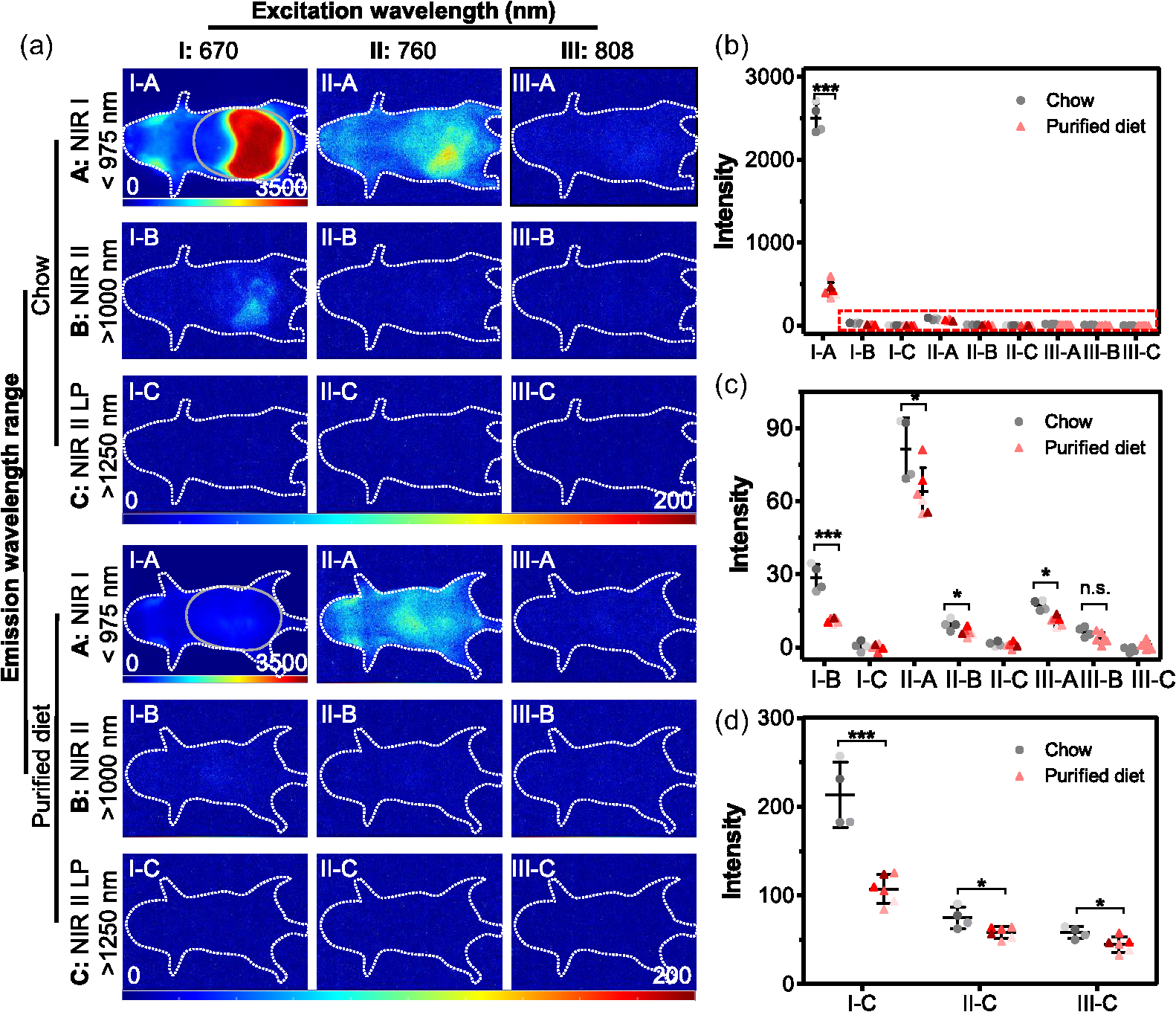Journal of Biomedical Optics
- Biochimie et nanosenseurs
Minimizing near-infrared autofluorescence in preclinical imaging with diet and wavelength selection
Auteurs Yidan Sun, Xingjian Zhong, Allison M. Dennis
Résumé
Preclinical fluorescence imaging with NIR-I (700 to 900 nm) illumination and short-wave infrared or NIR-II (1000 to 1700 nm) emission increases tissue penetration depth and improves resolution through decreased scattering. Background autofluorescence decreases signal-to-background ratios (SBR) in fluorescence imaging; maximizing SBR will further improve the impact of deep tissue imaging.
Aim
The impact of rodent diet, illumination wavelength, and emission range on the background fluorescence and contrast agent SBR were determined to assist with the experimental design of future imaging studies.
Approach
Following illumination with 670, 760, or 808 nm, autofluorescence in the NIR-I (<975 nm), NIR-II (>1000 nm), and NIR-II LP (>1250 nm) regions was assessed in mice fed chow or a purified diet using an IR VIVO preclinical imager (Photon, Etc.). Comparison of the SBR of liver-localized indocyanine green in the various imaging conditions indicated when gut autofluorescence was a problematic confounder.
Results
Mice fed chow exhibit high levels of background autofluorescence in the gastrointestinal tract and, to a lesser extent, skin when illuminated with 670 nm light for NIR-I imaging (700 to 975 nm), interfering with the identification of fluorescently labeled tissue. Background autofluorescence was reduced by more than two orders of magnitude by any of the following changes: (1) purified diet; (2) excitation with 760 or 808 nm illumination; or (3) emission in the NIR-II (1000 to 1600 or 1250 to 1600 nm). Although the SBR was generally sufficient for feature identification except when imaging of chow-fed mice with 670 nm excitation and NIR-I emission, switching to a purified diet, using longer excitation wavelengths, or using longer emission wavelengths improved SBR significantly.
Conclusions
Systematic comparison of imaging conditions and diet highlights the reduction in autofluorescence and increase in SBR enabled by intentional choices in the experimental parameters including diet, excitation wavelength, and emission wavelength range.

